Signs Your Water Heater Needs to be Repaired or Replaced
Do you ever feel like your water heater’s been running hot and cold or that the temperature of your shower just isn’t quite what it used to be? If so, then there’s a chance it could be time for a repair – or even replacement – of your water heater. Here at Smooth Waters Plumbing, we understand how daunting such a large repair job can seem, which is why we want to help guide you through the signs you may need to get yours fixed or replaced soon. Read on for more information about water heater maintenance and when might be the right time for repairs!
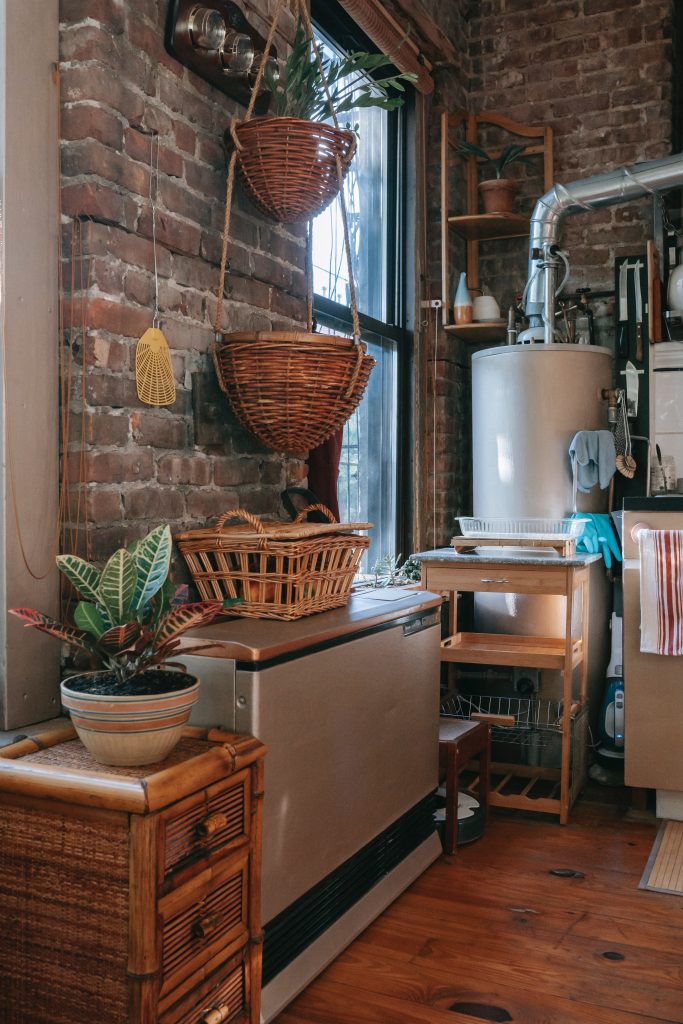
Strange noises coming from the water heater – a sign of sediment buildup in the tank
It’s a typical morning and you’re getting ready for work when you start to hear some strange noises coming from the water heater. You’ve grown accustomed to the gentle hum it makes when it’s heating up, but this noise is different – it’s more of a rumble or a growl. You may be inclined to ignore it, but strange noises like this could be an indication of sediment buildup in the tank. This sediment can accumulate over time and lead to clogs and even damage to the water heater if left unchecked. It’s important to address the issue before it becomes a larger, costlier problem. So, if you hear these strange sounds emanating from your water heater, it may be time to give it some attention.
Discolored hot water – a sign of rust and corrosion in the tank or pipes
Have you ever turned on the hot water in your home only to be met with a strange discoloration? If so, it may seem like a minor inconvenience at first, but it’s important to recognize that this discoloration could actually be a sign of rust and corrosion in your tank or pipes. This is not something to take lightly, as rust and corrosion can significantly shorten the lifespan of your plumbing system and even lead to leaks or burst pipes. It’s important to address the issue as soon as possible and have a professional inspect your system to determine the best course of action. By doing so, you can avoid costly repairs and ensure that your home’s plumbing system runs smoothly for years to come.
Lack of hot water flow – either due to scale build-up or broken pipes
There’s nothing quite like an icy blast of water in the shower to wake you up in the morning. Unfortunately, if you’re experiencing a lack of hot water flow, it’s not going to be a refreshing wake-up call. In fact, it can be downright frustrating. The cause of the problem could be due to a buildup of scale in your pipes, or worse yet, broken pipes that are preventing hot water from reaching your faucet. Either way, you need to take action to get your hot water flowing again. With a little detective work, you can identify the source of the problem and take the necessary steps to fix it.
Leaking around the water heater – a sign that it is time for replacement
Leaking around a water heater is one of the most visible signs that it is time to replace it. While it might be possible to fix the issue temporarily, the long-term solution is to replace the unit altogether. A leaking water heater not only wastes water but also poses a safety risk to your home. When water mixes with electricity, it creates an electrocution hazard. In addition, the moisture can lead to the growth of mold and mildew, causing damage to your walls, ceiling, and floor. Replacing a water heater might seem like an expense, but it is much better than suffering the consequences of a leaky unit.
Excessive rumbling sounds when turning on the faucet – could be related to faulty valves or failed thermostats
Have you ever turned on the faucet and been startled by a jarring rumbling sound? It’s not exactly the gentle flow of water you were hoping for. This unsettling noise could indicate a problem with the valves or thermostats in your plumbing system. While this issue isn’t necessarily catastrophic, ignoring it can lead to bigger, costlier problems down the line. So, if you’re experiencing excessive rumbling sounds when turning on the faucet, it’s worth looking into before it turns into a major headache.
Elevated energy bills – could indicate an old, inefficient, water heater
As the temperatures drop and the winter season sets in, many households are feeling the pinch of increasing energy bills. If you find your bills to be particularly high, it could be an indication that your water heater needs some attention. Your water heater is one of the biggest energy consumers in your home and if it is old or inefficient, it could be jacking up your energy bills. So, before you start blaming the cold weather or your family members for leaving the lights on, consider checking your water heater and upgrading to a more energy-efficient model. Your wallet will thank you in the long run!
What Flushable Wipes Do To Your Plumbing
Have you ever been tempted to use flushable wipes instead of toilet paper in your bathroom? Maybe you’ve heard that they do a better job at cleaning and smell nicer? Well, before reaching for that packet of wipes, you should know the truth about how these products can actually be quite detrimental to your plumbing. In this blog post we will take an in-depth look into why it is important to steer clear of using them regularly. Find out what effects they have on your plumbing systems and the consequences it might bring if too many are flushed down the drain!

What are flushable wipes and why are they bad for plumbing
Flushable wipes are advertised as being safe for septic systems, but are they really? Flushable wipes may seem like a convenient and hygienic alternative to toilet paper, but they can cause serious problems for your plumbing and the environment. These moist wipes do not break down as easily as toilet paper, leading to clogs and blockages in pipes and sewer systems. This can lead to costly repairs and even damage to your septic tank. Furthermore, overuse of flushable wipes can upset the delicate balance of bacteria in your septic system, which helps to break down waste.
Environmental Cost
Many wastewater treatment plants have reported large amounts of flushable wipes causing significant damage to their systems. Even if the wipes do make it through the plumbing, they can contribute to sewer backups and pollution in our waterways. It’s important to remember that just because something is labeled as “flushable”, it doesn’t mean it’s safe to flush. It’s best to stick to using toilet paper and dispose of any other hygiene products in the trash.
Fatberg Effect
The fat berg effect is when flushable wipes combine with grease, fat, and other particles that are already trapped in pipes. This creates a formation similar to an iceberg. Formations like these can cause major clogs in drains and pipes. Fatbergs can become as long as 10 feet or longer and even weigh as much as 100 pounds. These clogs are often found in homes and result in huge plumbing repair costs. A smaller version of this clog is called a softball clog and is just as destructive.
All in all, while flushable wipes may seem like a convenient solution, it’s important to use them sparingly and prioritize toilet paper to avoid any unwanted consequences.
Simple Method to Remove Rust Stains From Your Toilets
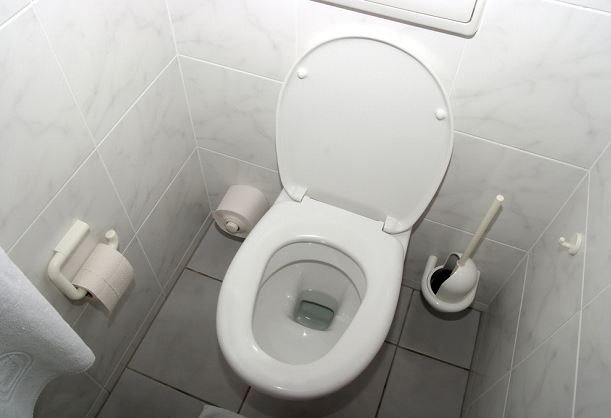 Are your toilets looking worse for wear with stubborn rust stains that won’t go away? Well, don’t despair! Removing those pesky rust stains from the toilet bowl doesn’t have to be a time-consuming chore. This comprehensive blog will discuss simple methods you can use to remove rust stains quickly and effectively, so you can enjoy sparkling clean restrooms in no time at all! From chemical solutions to DIY removers to proven products – we’ve got it all covered. Read on for a quick tips and tricks that will make sure your toilets come out spick and span!
Are your toilets looking worse for wear with stubborn rust stains that won’t go away? Well, don’t despair! Removing those pesky rust stains from the toilet bowl doesn’t have to be a time-consuming chore. This comprehensive blog will discuss simple methods you can use to remove rust stains quickly and effectively, so you can enjoy sparkling clean restrooms in no time at all! From chemical solutions to DIY removers to proven products – we’ve got it all covered. Read on for a quick tips and tricks that will make sure your toilets come out spick and span!Identify the cause of the rust and take measures to prevent it from happening again
Rust can be a frustrating and unsightly problem for any metal object. The cause of rust can vary, but it is often a result of exposure to moisture and oxygen over a period of time. To prevent rust from happening again, it is important to understand the underlying cause and take measures to address it. This could include applying a protective coating or sealant, using rust inhibitors, or simply keeping the object dry and well-ventilated. By taking proactive steps to prevent rust, you can ensure that your metal objects remain in good condition for years to come.
Prepare a mixture of vinegar and baking soda
Looking for an effective and natural cleaning solution? Look no further than your own pantry! Mixing vinegar and baking soda together creates a powerful paste that can tackle even the toughest of stains and messes. Not only is this solution non-toxic and safe for use around children and pets, but it also doesn’t contain any harsh chemicals that could damage your surfaces. Mix one part vinegar to three parts baking soda into a paste. You’ll be amazed at the wonders of this simple yet effective mixture.
Use a toilet brush to apply the paste directly onto the rust stains
Rust stains can be a frustrating eyesore in an otherwise clean bathroom. But fear not, because there’s an easy solution that may surprise you: the humble toilet brush. By using the brush to apply paste directly onto the stains, you can effectively target the rust and eliminate it from your porcelain surfaces. The bristles of the brush allow for thorough application to ensure the paste is evenly distributed. So next time you’re faced with stubborn rust stains, consider your trusty toilet brush as a valuable ally in the battle against bathroom grime.
Let the paste sit for an hour before scrubbing it off with the toilet brush. For stubborn stains, you can use steel wool.
Rinse off any remaining residue with warm water
After a thorough cleaning, it’s important to make sure that all traces of residue are completely removed. One effective way to do this is to rinse off any remaining residue with warm water. This step not only helps to remove any lingering grime, but it also ensures that your surfaces are left sparkling clean and hygienic. Plus, warming up the water helps to loosen dirt particles and makes it easier to scrub away any stubborn stains. So the next time you’re giving your kitchen or bathroom a deep clean, don’t forget to finish off with a good rinse using warm water.
In conclusion, getting rid of rust stains from your toilet should not be a daunting task. As long as you determine what is causing the rust and take measures to prevent future occurrences, you can easily remove these unwanted stains. The method described in this article uses a paste of vinegar and baking soda, which does an excellent job of removing both old and fresh rust spots. Following these steps will leave you with a sparkling clean toilet every time!
Traditional Vs. Tankless Water Heater
When it comes to choosing a water heater for your home, there are two main options – traditional tank-style water heaters and tankless systems. While both of these methods provide hot water on demand, they each have their own unique features and benefits that make them ideal for different types of households. In this blog post we’ll explore the differences between these two systems so you can determine which one is right for your needs. We’ll discuss everything from pros and cons to installation tips and maintenance schedules, so you can determine which type best suits your lifestyle. Whether you’re looking for an energy efficient model, a long-lasting system or just want something simple that won’t break the bank — there is sure to be an option here that fits your needs!
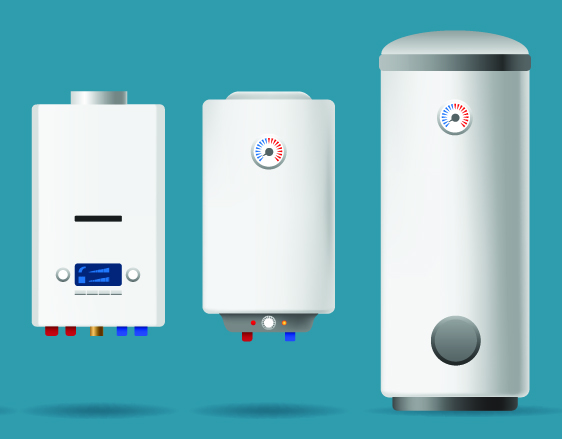
Overview of Traditional Water Heaters
Traditional water heaters have been a popular choice for providing hot water to households for decades. These heaters typically feature a large tank that stores and heats water, which is then delivered through a network of pipes to sinks, showers, and other fixtures in your home. These tanks usually hold from 20 to 80 gallons of water. One benefit of traditional water heaters is that they can provide a continuous supply of hot water, as long as the tank is kept full. While they may not be the most energy-efficient option, they are a reliable and cost-effective choice for many homeowners. It’s important to properly maintain your traditional water heater to help extend its lifespan, and consider upgrading to a newer, more efficient model if your current one is outdated.
Advantages and Disadvantages of Traditional Water Heaters
One of the biggest advantages of traditional water heaters is their affordability. They are usually less expensive than their tankless counterparts and can be installed relatively easily. They also have a longer lifespan compared to tankless heaters with proper maintenance. However, they do have some disadvantages, including energy inefficiency. Traditional water heaters constantly heat a large amount of water, which means energy is wasted when the water isn’t being used. They also take up valuable storage space and can be prone to leaks if not properly maintained or serviced by a professional plumber in Conway. Overall, while traditional water heaters have their pros and cons, it’s important to weigh all factors before making a decision on which type of water heater is right for your home.
Advantages and Disadvantages of Tankless Water Heaters
For those in the market for a new water heater, tankless options have become increasingly popular in recent years. While they offer some undeniable advantages, there are also a few disadvantages to consider. On the plus side, tankless water heaters are more energy efficient and can save homeowners money on utility bills. They also take up less space and provide endless hot water, as they heat water as needed rather than storing a set amount. However, they can be more expensive up front and may require more maintenance. Additionally, they may not be the best option for large households with high hot water demands. Ultimately, the decision depends on each individual’s unique needs and budget.
Cost Comparison Between Traditional and Tankless Water Heaters
When it comes to choosing a water heater for your home, one of the most important factors to consider is cost. Traditional tank water heaters and tankless water heaters have different upfront costs and operating costs, which can make a big difference in your overall expenses. Traditional water heaters are usually cheaper to purchase and install, but they use more energy to keep water heated in a large tank, leading to higher monthly bills. Tankless water heaters, on the other hand, are more expensive to install, but they heat water on demand, so they use less energy and can save you money in the long run. It’s important to weigh the upfront costs and ongoing expenses before deciding between a traditional or tankless water heater.
In conclusion, both traditional and tankless water heaters offer substantial benefits while having their own limitations. It ultimately comes down to personal preference and price point when deciding which type of water heater is right for your needs. Traditional water heaters are generally less expensive upfront, but they require more energy to utilize in the long run whereas tankless water heaters tend to be more expensive upfront, but they offer a range of features that offset the initial cost such as extended longevity and much higher energy efficiency. Consider all your options carefully before making a decision and investing in a new water heater.
The Importance of Drain Cleaning and Maintenance
Are you looking for ways to protect your home plumbing system from a costly disaster? It’s easy to forget about the importance of proper drain cleaning and maintenance, but it is actually one of the most important steps in protecting your plumbing.
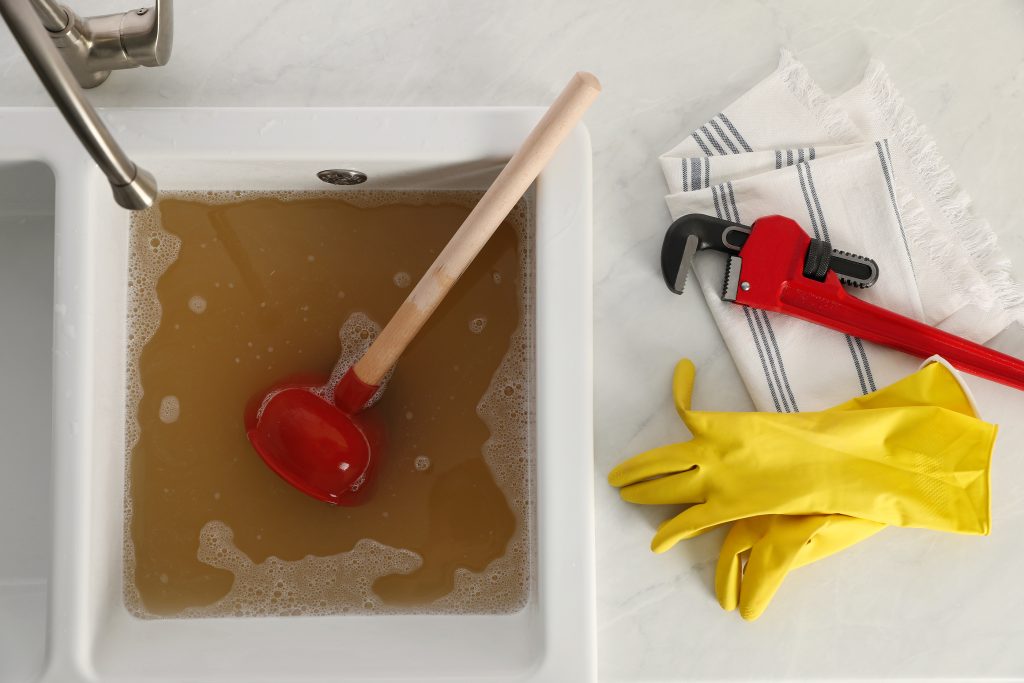
Clogged drains and pipes can eventually lead to expensive problems if not taken care of correctly. In this blog post, we will look at why regular drain cleaning is necessary, what to watch for when it comes time for drain maintenance and repair, and some tips on how you can prevent clogs or blockages in your own home. With the right advice and guidance, you can keep your plumbing system flowing smoothly without any worry!
What is drain clogging and why should I care about it
Drain clogging occurs when materials like grease, hair, and food build up and prevent water from draining properly. Not only does this cause inconvenience and a potential mess, but it can also lead to more serious issues like water damage or even mold growth. Clogs can occur anywhere from your sink to your toilet, and it’s important to address them as soon as possible to prevent damage to your plumbing system. By taking simple preventative measures like using a strainer in your sink and disposing of grease properly, you can save yourself the hassle and expense of calling a plumber to fix a clogged drain. Don’t ignore drain clogging – taking action now can save you from bigger problems down the line.
How to prevent clogged drains
Clogged drains are a common problem in many households. They can lead to unpleasant odors, slow drainage, and even water damage if left unchecked. But preventing clogged drains is easier than you might think. One of the most effective ways is to be careful of what you let go down the drain. Avoid disposing of cooking oil, grease, or food scraps down the sink. Instead, scrape leftovers into the trash or compost bin. Another simple step is to install a drain strainer in your sink and bathtub to catch hair and other debris. Regularly cleaning your drains with a mixture of baking soda and vinegar can also help prevent clogs. By taking these preventative measures, you can keep your drains flowing smoothly and avoid costly plumbing repairs.
Different types of drain cleaners and their benefits
Drain cleaners come in different types, from chemical-based to enzyme-based options. Chemical drain cleaners may be harsh, but they work quickly to dissolve and flush away clogs. On the other hand, enzyme-based cleaners work more slowly, but they are gentler on your pipes and the environment. Choosing the right type of drain cleaner for your needs can help you maintain your plumbing system and avoid costly repairs. It’s important to consider the benefits and drawbacks of each type before making a decision.
DIY tips for unclogging a slow drain
Dealing with a slow drain can be frustrating, especially when you don’t want to call a plumber or use harsh chemicals. Fortunately, there are many DIY tips out there to unclog your drain. One helpful approach is to try pouring boiling water down the drain to dislodge the clog. Another option is to use a plunger to create pressure and force the clog out of the pipes. You could also attempt to remove the clog with a plumbing snake, which allows you to directly access the blockage. If these methods don’t work, you may want to consider making a homemade drain cleaner using baking soda and vinegar. With these tips, you’ll be able to tackle your slow drain with ease.
Safety precautions when using chemical drain cleaning products
To ensure the safety of both you and your home, it is important to use caution when handling chemical drain cleaning products. Always read the instructions carefully before use and wear protective gear such as gloves and goggles. Keep in mind that these products contain harsh chemicals that can cause skin irritation and other health problems if not used correctly. Furthermore, never mix different drain cleaners or pour them down the drain simultaneously as this can lead to dangerous chemical reactions. Always ventilate the area where the product is being used and keep children and pets away from the area until it has been cleaned up completely. By taking these necessary precautions, you can effectively clear your clogged drains while keeping yourself and your home safe from harm.
Professional maintenance services and their advantages
Owning a property, whether it be a home or a place of business, can be a great responsibility. One of the responsibilities that many property owners overlook is regular maintenance. It’s not always easy to find the time or know-how to keep a property in top shape, which is where professional maintenance services come in handy. These services offer a variety of advantages to property owners, including peace of mind knowing that their property will be well-maintained, improved property value, and reduced risk of costly repairs or replacements. By entrusting your property’s maintenance to professional plumbing companies like Smooth Waters Plumbing, you can focus on enjoying your property rather than worrying about its upkeep.
To sum it up, drain clogging can be an annoying and inconvenient issue to deal with, and it often requires urgent attention. Knowing how to clean your drain without causing further damage can be beneficial for you if there is a problem. You can opt for DIY tips or use specific chemical cleaning products, but make sure to take all safety precautions in order to avoid any unnecessary accidents. Lastly, one of the most efficient options is investing in professional maintenance services which provide knowledgeable expertise in this field and specialized equipment. The skilled professionals will get the job done quickly and effectively while saving you time and cost associated with potential damages.
Why Does My Sewer Keep Backing Up?
For many homeowners, sewer backups can be a huge source of frustration. Not only are they incredibly inconvenient and disruptive to your day-to-day life, but oftentimes resolving such an issue requires hiring a professional plumber. But before you reach for the phone book to find a local pro, take some time to consider why these issues might have surfaced in the first place! In this blog post we’ll discuss common causes of recurring sewage backups so that you can better diagnose what’s going on beneath your feet. With an understanding of the underlying problem, it will be easier than ever to target potential solutions and stop all those backups from plaguing your life once again.
Identify the Problem
A clogged drain is never a pleasant experience, but identifying the root of the problem is the first step in getting things flowing again. If you’re experiencing a drainage issue, it’s important to check for blockages in the line and examine drain pipes for cracks or clogs. These pesky obstructions can cause major headaches and even lead to potential damage to your home. So, don’t let a clogged drain ruin your day – take the time to investigate and solve the problem. Your plumbing system (and your sanity) will thank you.
Check Your Ventilation System
Have you checked your ventilation system recently? It’s important to make sure it’s working properly, not just for your own comfort but also for the health of your sewer line. If your ventilation system isn’t working properly, it could be allowing air to enter your sewer line, which can cause some pretty nasty problems. You might notice strange smells or even gurgling sounds coming from your drains. So, don’t ignore your ventilation system – take the time to make sure it’s in good shape and keep your plumbing happy and healthy.
Inspect Your Plumbing Fixtures
Your plumbing fixtures may not be the most glamorous part of your home, but they play a critical role in keeping your living space clean and functional. One sign that something may be amiss with your pipes or drains is slow drainage. If you notice that water is taking longer than usual to flow down the sink or shower drain, it could be a sign that there’s a blockage somewhere in the system. Another common clue that you should inspect your plumbing fixtures is a strange odor emanating from your drains. This unpleasant scent could be a sign that water isn’t flowing properly, leading to drain backups and clogs. By keeping a close eye, and nose, on your plumbing fixtures, you can detect and address issues before they lead to a more serious problem.
Clear Out the Clogs
Clearing out clogs in your pipes can seem like a daunting task, but it’s an important one to ensure that your plumbing system is functioning properly. Debris, like tree roots and other obstructions, can cause backups and damage to your pipes over time. By taking the time to remove these clogs, you can prevent costly repairs and enjoy a smoothly running plumbing system. Don’t let a clogged pipe put a damper on your day – take action to clear out the clogs and keep your plumbing in top shape.
Have a Professional Take a Look
Dealing with plumbing issues can be frustrating and exhausting. When you’ve exhausted all DIY measures and your sewer line is still giving you trouble, it may be time to call in a professional, like those at Smooth Waters Plumbing. A plumber can inspect your sewer line thoroughly and identify any underlying issues that you may not be aware of. With their expertise in this field, they can make necessary repairs quickly and efficiently. Avoid further complications and let the professionals take over. Your sewer line will thank you!
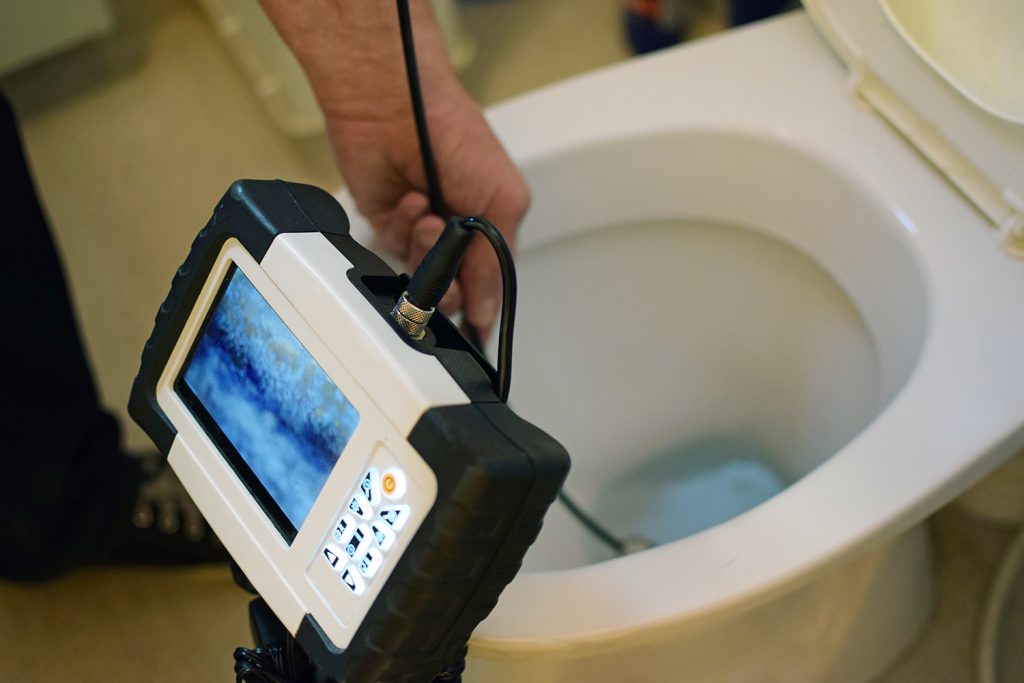
Prevent Future Problems
Your sewer line is a critical component of your home’s plumbing system. It carries away all the wastewater from your sinks, showers, and toilets, ensuring that your home stays clean, healthy, and comfortable. However, if you don’t take proper care of it, your sewer line can become blocked, leading to a host of unpleasant and expensive problems. To avoid these issues, it’s essential to implement regular maintenance on your sewer line. By doing this, you can keep it clear of blockages and buildup and ensure that it functions correctly. So why wait? Take action now to keep your sewer line in top condition and prevent future problems from occurring.
In conclusion, when it comes to sewer backups, open the lines of communication early. Identify any potential blocked pipes as soon as possible and check your plumbing fixtures for signs of a problem. Make it a point to maintain your sewer line regularly in order to avoid future issues. If all else fails, calling a professional can help diagnose and address the issue quickly and effectively. Avoid overlooking blockages or cracks in your sewer line, as this could lead to serious damage that could cost thousands of dollars more than if you had taken proper preventive action beforehand.
What Should You Do With Leftover Grease
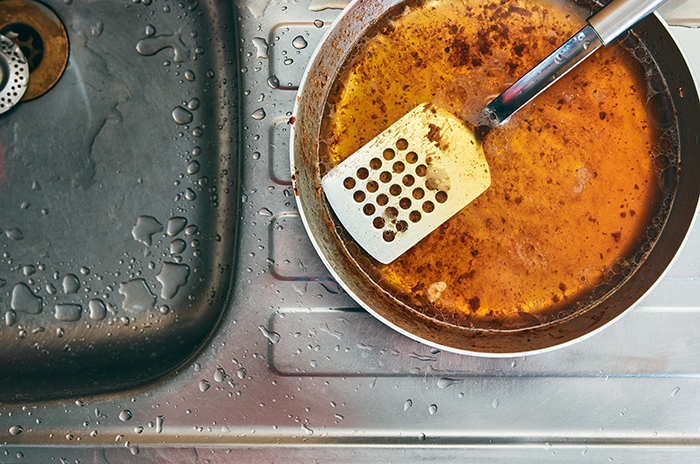
When it comes to cooking, most of us use grease as an essential ingredient. Whether it’s sautéeing in oil or baking with butter, the role of grease is undeniable on your plates. But what about when all the food is gone and you have leftover fat? What should you do with that extra grease? Many people aren’t sure how to dispose – or even store – leftover oils and fats safely. In this blog post, we will look at some dos and don’ts for dealing with these precious residues from your kitchen creations. Read on for tips on what to do (and not do!) when handling used cooking grease.
Understand the risks associated with disposing of grease in sinks and drains
Grease is a common kitchen byproduct that unfortunately causes a lot of problems when disposed of incorrectly. The risks associated with pouring grease down the sink or drain cannot be underestimated. The hot grease may appear harmless in the moment, but in reality, it can solidify and clog pipes over time, leading to expensive plumbing repairs. It can also contribute to blockages in municipal water systems, leading to sewer backups and environmental harm. To avoid these headaches, it’s important to dispose of grease correctly. Whether it’s through using a grease trap or simply letting it cool and throwing it in the trash, taking the extra time to dispose of grease properly can save you a lot of trouble down the road.
Know how to safely store leftover grease for later use
If you’re someone who likes to cook, you know that leftover grease can come in handy for creating flavorful meals. But storing it can be a bit tricky. You want to make sure you’re doing it safely, so you don’t accidentally cause a fire or put yourself at risk of illness. One safe way to store it is to wait for it to cool down, then pour it into a container with a tight-fitting lid. Glass containers are preferable because they do not leak toxins. Keep it in the refrigerator until you’re ready to use it again. Just make sure to use it up within a month or so, so it doesn’t go rancid. With these simple tips, you can make the most of your leftover grease.
Clean up your mess – do not leave excess grease on stovetops or counters
We’ve all been there – cooking up a storm in the kitchen, excited to enjoy a delicious meal, and then we’re left with a greasy mess on the stovetop or counter. It’s tempting to leave it for later, but trust us, it’s worth taking the extra time to clean it up now. Not only will you avoid unpleasant smells and stains, but excess grease can attract insects and even pose a fire hazard. So, grab a sponge and some cleaning spray, and wipe down those surfaces until they shine. Your future self (and housemates!) will thank you.
Learn about different ways to repurpose and reuse leftover grease
 When it comes to leftover grease, most people simply toss it in the trash. But what if we told you that there are actually a multitude of ways to repurpose and reuse it? For starters, you could mix grease that is unspoiled and uncontaminated (no chemicals like cleaners in it) with birdseed and create your very own bird feeder. This feed supplements for wild birds are commonly called suet cakes. Look them up online for a variety of recipe mixes that attract certain birds interest. Alternatively, if you’re feeling crafty, you could try your hand at making soap with the leftover grease. And for those who own leather items, adding a bit of grease can actually condition and soften the material. These are just a few examples of the many possibilities when it comes to repurposing and reusing leftover grease. So next time you find yourself with some extra grease on your hands, think twice before throwing it away!
When it comes to leftover grease, most people simply toss it in the trash. But what if we told you that there are actually a multitude of ways to repurpose and reuse it? For starters, you could mix grease that is unspoiled and uncontaminated (no chemicals like cleaners in it) with birdseed and create your very own bird feeder. This feed supplements for wild birds are commonly called suet cakes. Look them up online for a variety of recipe mixes that attract certain birds interest. Alternatively, if you’re feeling crafty, you could try your hand at making soap with the leftover grease. And for those who own leather items, adding a bit of grease can actually condition and soften the material. These are just a few examples of the many possibilities when it comes to repurposing and reusing leftover grease. So next time you find yourself with some extra grease on your hands, think twice before throwing it away!Grease is an important and often overlooked byproduct of cooking, and properly disposed of grease can make all the difference when it comes to keeping your home safe and functioning. With just a bit of understanding and knowledge about what to do with grease after cooking, everyone can do their part in protecting our environment and keeping responsible waste disposal top-of-mind.
What To Do With A Leaky Pipe Before A Plumber Arrives
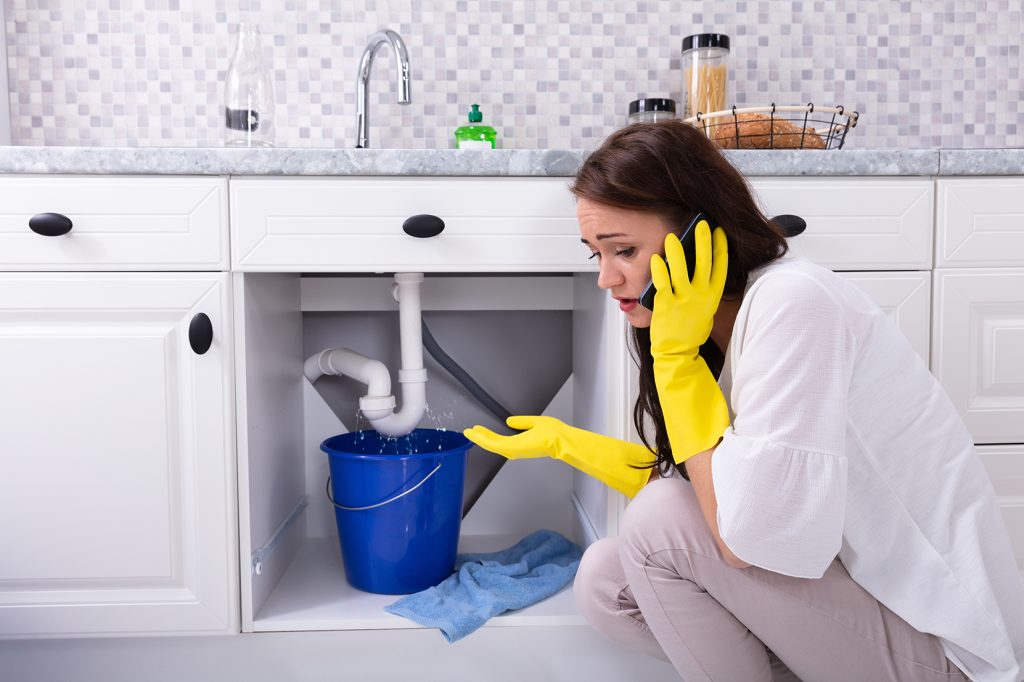
Are you dealing with a leaky pipe and wondering what to do before the plumber arrives? You have come to the right place! It’s important to understand that when it comes to plumbing emergencies, acting fast is key in order to prevent further damage. While waiting for help from a plumber, there are steps you can take on your own in order to avoid additional stress and expenses caused by water leakage. In this post we’ll talk about everything from shutting off the main water switch, collecting evidence of any possible sewage overflows or spills, and purchasing a repair kit for temporary fixes until more permanent repairs can be made, and many other useful tips.
Shut off the water to prevent further damage
Water damage can be a homeowner’s worst nightmare. Whether from a burst pipe, leaky roof, or other source, when water gets where it shouldn’t be, it can cause extensive and costly damage. That’s why shutting off the water as quickly as possible is essential to prevent further harm. By doing so, you can stop the flow of water and avoid additional destruction to your property. While it may seem like a small step, taking action to shut off the water can make a big difference in minimizing the impact of a water-related disaster. So, be sure to know where your water shut-off valve is located and how to turn it off in an emergency. It could save you a significant amount of time, money, and stress in the long run.
Clean up any water that has already spilled
Water spills can happen to anyone, at any time. Whether it’s a minor spill from a glass of water or a larger one from a broken waterline, cleaning it up promptly is crucial. Not only can standing water cause damage to floors and furniture, but it can also create a breeding ground for bacteria and mold. This is especially true if the water contains any contaminants. So, it’s important to take swift action. Grab a towel or mop and get to work. By cleaning up any water that has already spilled, you’ll be able to avoid potential health hazards and costly repairs.
Locate the source of the leak and determine if you can fix it yourself
A constant dripping sound has been keeping you up at night and you know something isn’t right. You suspect there might be a leak, but where could it be coming from? The first step is to locate the source of the problem. It could be an issue with a pipe, faucet, or appliance. Once you’ve identified the issue, determine if it’s something you can tackle on your own. While some leaks may be as simple as tightening a loose connection or replacing a washer, others may require the help of a professional. With a bit of determination and know-how, you might just save yourself some money and have a sense of accomplishment in fixing the leak yourself.
Consider using an emergency repair kit to temporarily stop the leak until a plumber can arrive
Picture this: it’s a quiet evening at home, and you’re snuggled up on the couch watching your favorite movie. Suddenly, you hear a loud dripping sound coming from the bathroom. As you investigate, you discover a leak coming from your sink that won’t stop. What do you do? This is where an emergency repair kit comes in handy. By having one on hand, you can quickly and temporarily stop the leak until a professional plumber arrives. These kits often include epoxy putty, a cast, a resin that activates with water to help harden the cast and wrap that will cover the cast until the resin sets. It’s a small investment that can save you from a potential disaster and give you peace of mind knowing you have a backup plan in case of any plumbing emergencies.
All in all, dealing with a leaky pipe can be a stressful and overwhelming experience. But understanding what you should do beforehand can help make the entire process easier. Shutting off the water, cleaning up any spills, and locating the source of the leak are great starting steps, as is considering an emergency repair kit for temporary support until a plumber can arrive. By taking these proactive measures, you’ll be able to tackle every step in plumbing repairs with ease before making permanent changes.
What To Expect With A Sewer Camera Inspection
 If your home has unreliable plumbing or you suspect a clog, a good first step is to consider getting a sewer camera inspection. This type of diagnostic procedure can provide answers quickly with minimal fuss and disruption. A qualified technician inserts a specialised video camera into the pipes to inspect the cause of the issue from inside the pipeline directly. During this process, they will get an up-close view of any sewage blockages, damaged pipes or other issues that may be causing problems in your plumbing system – all without needing to excavate around it! With knowledge gained from such inspections, remediation measures are much easier than traditional excavation and repair methods and can generally save time and money in comparison too. Keep reading on to find out more about how this works!
If your home has unreliable plumbing or you suspect a clog, a good first step is to consider getting a sewer camera inspection. This type of diagnostic procedure can provide answers quickly with minimal fuss and disruption. A qualified technician inserts a specialised video camera into the pipes to inspect the cause of the issue from inside the pipeline directly. During this process, they will get an up-close view of any sewage blockages, damaged pipes or other issues that may be causing problems in your plumbing system – all without needing to excavate around it! With knowledge gained from such inspections, remediation measures are much easier than traditional excavation and repair methods and can generally save time and money in comparison too. Keep reading on to find out more about how this works!Overview of a sewer camera inspection – what it is, why it’s important, and how it works
Sewer camera inspection may not be a household term, but it plays a critical role in keeping our plumbing systems functioning properly. This process involves using a specialized camera attached to a long, flexible cable to journey through the pipes beneath our homes and buildings. Once inside, the camera captures high-quality footage of the conditions within, including any clogs, breaks or other damages. This footage can then be reviewed by a plumbing professional to diagnose issues and recommend repairs. For property owners and managers, sewer camera inspection offers peace of mind, as it can help identify and prevent costly and inconvenient plumbing problems before they arise.
Benefits of using a sewer camera inspection – such as detecting problems in hard-to-reach areas and being able to view real-time footage
When it comes to maintaining a properly functioning sewer system, professional plumbers often utilize advanced technology such as sewer line camera inspections South Carolina. With their ability to detect blockages and damages in areas that would otherwise be difficult to access, these inspections allow for efficient and effective problem-solving. And the benefits don’t end there – plumbers can view real-time footage of the suspected issues, making it easier to identify the root cause and provide accurate solutions. Thanks to this powerful tool, homeowners and business owners alike can rest assured knowing that their plumbing systems are being thoroughly examined and repaired with precision.
Common problems found during sewer camera inspections – clogs, root infiltration, broken pipes, or pipe collapse
Common problems you might encounter during such inspections include clogs, root infiltration, broken pipes, or pipe collapse. At times, a clog in your sewer lies within your property and not the municipal system. With a sewer camera inspection, your plumber can easily diagnose which side is affected and carry out the necessary repairs. Similarly, identifying root infiltration and crushed pipes early on allows for repairs to be done before things get out of hand saving you a lot of time, frustration, and money in the long run.
Remember, troubleshooting with a camera inspection can save money in the long run by helping diagnose problems quickly and accurately. Ultimately, sewer camera inspections are an invaluable tool that can aid homeowners in detecting potential plumbing problems before they become severe and expensive to address.
How To Unclog A Stopped Up Sink
Are you fed up with dealing with a stopped up sink? If so, this post will provide you with an easy-to-follow workflow on the quickest and most effective way of unclogging your clogged sink. In order to properly do this job, it’s important to have the right tools and supplies at hand, so we’ll start off by describing what you need. From there, we’ll describe step-by-step instructions for how to use the necessary equipment and materials in order to unplug any blocked drain or pipe that’s causing your sinks’ backup problems. Once these tips are put into practice you’ll be able to speedily remedy whatever issue is standing in between your home enjoying fully functioning plumbing again!
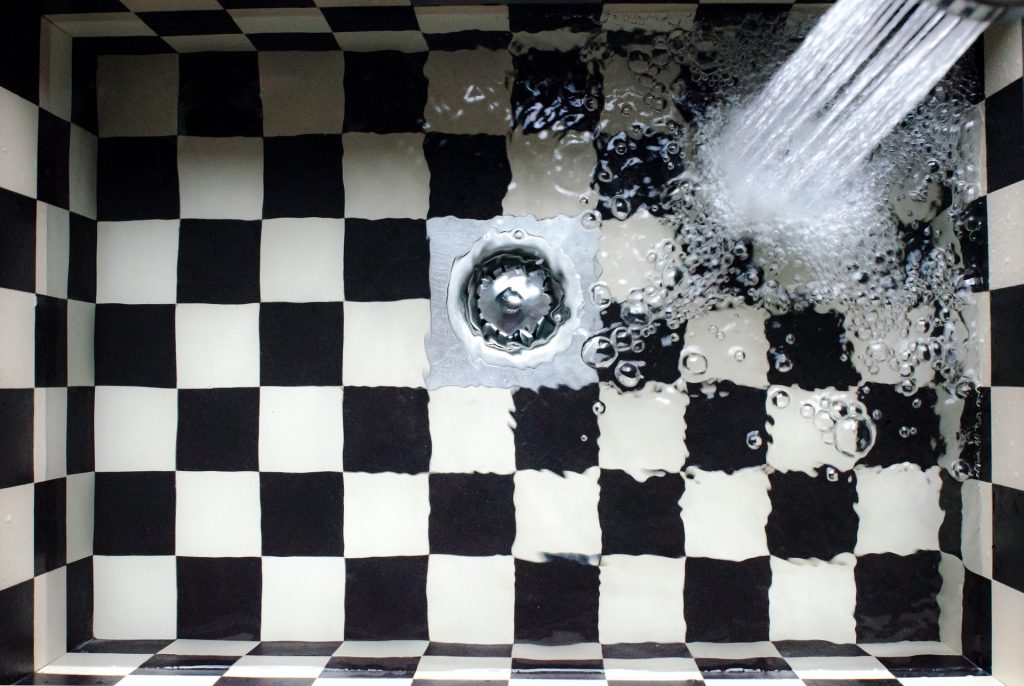
Identify the source of the clog – Is it a hair clog, food clog, or something else entirely
Picture this: you’re standing in your shower and the water is beginning to rise around your feet. You quickly realize that you have a clog on your hands. But what kind of clog is it? Is it a hair clog from all the long locks you’ve been shedding? Or could it be a food clog from all the dishes you’ve been washing? A hint in locating the clog – it is often located in the pipe or trap that leads away from the “last” nonworking fixture when starting from the top of the house down. Identifying the source of a clog can be a tricky business, but it’s important to know what you’re dealing with so you can effectively remove the blockage and get back to your regularly scheduled shower routine. So put on your detective cap and start investigating – your clean drains are waiting for you!
Gather supplies – rubber gloves, basin wrench, measuring cup and plunger
When it comes to handling plumbing issues at home, having the right supplies on hand can make all the difference. To tackle a clogged drain, you’ll need a few key tools like rubber gloves, a basin wrench, a measuring cup, and a plunger. While these may seem like small items in the grand scheme of things, they can make a big impact when it comes to fixing problems on your own and avoiding costly plumbing bills. With these simple tools in tow, you’ll be able to take on whatever clogs or leaks come your way.
Turn off water supply and loosen the sink trap with a wrench
When it comes to fixing a stubborn sink clog, turning off the water supply and loosening the sink trap with a wrench can make all the difference. By turning off the water supply, you can avoid any unwanted splashes or spills while working on the sink trap. Once the water is off, use a wrench to gently loosen the trap and remove any debris that may be causing the blockage. With a little bit of elbow grease and know-how, you can have your sink working like new in no time!
Use a measuring cup to remove any standing water in the sink
Dealing with a clogged sink can be quite frustrating, especially when it’s filled with standing water. Not only is it unsightly, but it can also be a breeding ground for bacteria and other harmful microorganisms. Fortunately, there’s a simple solution to this problem – a measuring cup! Using a measuring cup to scoop out any water left in the sink can save you time and effort. It’s a quick fix that won’t damage your sink and will leave it clean and ready to use again in no time.
Insert a plunger into the drain to loosen the blockage
This common household tool, when used correctly, can save you the hassle of calling a plumber and shelling out big bucks for their services. The plunger works by creating suction that dislodges the blockage, allowing water to flow freely down the drain. So next time you encounter a stubborn clog, don’t panic! Just grab a plunger and give it a try. You might be surprised at how effective this simple technique can be.
If a plunger does not work then use a drain snake or auger to clear the pipe
Sometimes it seems like no amount of plunging can clear that stubborn blockage. But fear not! When the plunger fails, it’s time to bring in the big guns: a drain snake or auger. As intimidating as they may look, these tools are actually quite simple to use and can save you a lot of money in plumber fees. Whether it’s hair, food, or any other kind of debris blocking your pipe, a drain snake or auger can navigate those tight curves to get the job done.
It is essential to note that this article provides a very general overview on how to unclog a sink. Depending on the severity and type of clog, other steps may be needed. There are also products available at hardware stores that can help break down the blockage, such as specialized drain cleaners or even particularly strong versions of the more common cleaners. Before attempting any of these techniques, make sure to take all necessary safety precautions so that you can stay safe while working on your sink. Unclogging a sink can easily be accomplished with some time, patience – and now knowledge! With the details provided in this blog post, you should have all the advice and guidance needed to get that sink flowing freely again.
PVC vs. PEX Piping
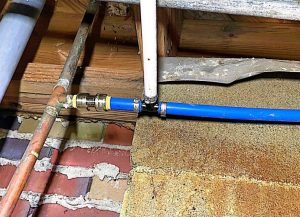 When you’re tackling a home improvement project, it’s important to make sure that the materials you use are up to the task. Whether it’s a bathroom plumbing job or a sprinkler system installation, there is much at stake if your choice of piping isn’t durable and reliable. With so many options on the market these days, choosing between PVC and PEX pipes can be overwhelming. In this blog post we’ll explore each type of pipe to better understand their key characteristics as well as analyze which option might be best for your specific needs and desired lifespan. Read on for an in-depth comparison between PVC and PEX Piping!
When you’re tackling a home improvement project, it’s important to make sure that the materials you use are up to the task. Whether it’s a bathroom plumbing job or a sprinkler system installation, there is much at stake if your choice of piping isn’t durable and reliable. With so many options on the market these days, choosing between PVC and PEX pipes can be overwhelming. In this blog post we’ll explore each type of pipe to better understand their key characteristics as well as analyze which option might be best for your specific needs and desired lifespan. Read on for an in-depth comparison between PVC and PEX Piping!
Overview of PVC and PEX piping
PVC and PEX piping are two popular options for homeowners and contractors when it comes to plumbing installations. PVC, short for polyvinyl chloride, is a rigid plastic material commonly used for drain, waste, and vent (DWV) systems due to its affordable price and durability. On the other hand, PEX, or cross-linked polyethylene, is a flexible tubing that is ideal for supply lines, as it can easily bend around obstacles and reduce the risk of leaks. Both materials have their advantages and disadvantages, and the choice ultimately depends on the specific needs and budget of the project. However, with proper installation and regular maintenance, both PVC and PEX can provide reliable and long-lasting piping solutions for various plumbing applications.
Comparison of Longevity, Sustainability, and Cost of PVC and PEX Piping
When it comes to choosing piping materials, many factors come into play, such as longevity, sustainability, and cost. PVC and PEX are two of the most popular thermoplastic pipes out there. As far as lifespan, PEX usually lasts about 40-50 years, while PVC can last about 70 years. PVC boasts impressive durability, making it perfect for use in water systems. Meanwhile, PEX is known for its flexibility and easier installation. However, it’s also essential to weigh the environmental impact of these materials. PVC presents potential health hazards due to its release of toxic chemicals during production. As for PEX, it’s touted as a more eco-friendly alternative due to its recyclability, improved energy efficiency, and fewer emissions. Finally, let’s not forget cost-effectiveness. PVC is generally cheaper than PEX, but bear in mind that affordability shouldn’t be the sole deciding factor. Before making a decision, be sure to evaluate all aspects of each piping material.
In conclusion, PVC and PEX pipes are two of the most popular types of piping on the market. When it comes to choosing between them, it really depends on the individual’s unique needs and budget. PVC is a durable, long-lasting material with a lower cost-per-foot but no flexibility, while PEX is more expensive per foot, but offers great insulation, flexibility, and is more sustainable in the long run. Although you cannot go wrong with either type of pipe for short plumbing projects such as sink hookups or drain pipes in bathrooms, PEX might be best for complicated ones like re-piping an entire home or building due to its flexibility. Furthermore, there are also many alternative pipes available that can meet anyone’s project needs. Ultimately it is important to weigh up all of your options before making a decision about which pipe to choose for your job.
How To Fix A Running Toilet
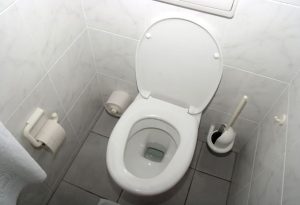 When you’re dealing with a running toilet, it’s more than just an annoying sound, it can also be costing you money month-after-month in increased water bills. Now is the time to take control of your plumbing situation and fix that pesky running toilet!
When you’re dealing with a running toilet, it’s more than just an annoying sound, it can also be costing you money month-after-month in increased water bills. Now is the time to take control of your plumbing situation and fix that pesky running toilet!In this post, we will show you how to troubleshoot the common causes of a running loo and repair your own bathroom fixture without having to hire a professional plumber. Discover tips on how to identify potential leaks or blockages and learn best practices for tightening components that may be causing water from flowing continuously from the tank into the bowl below. With our step-by-step guide, say goodbye to noisy toilets and high water bills today!
Safety precautions for fixing a running toilet
Before you begin, make sure you have all the necessary tools and equipment, including gloves and a face mask. Shut off the water supply and drain the toilet tank before starting any repairs. Be careful when handling any sharp or metal parts and avoid contact with any potentially harmful chemicals. By taking these precautions, you can fix your running toilet safely and efficiently.
Identify the parts of the toilet that are causing the issue
Don’t worry, identifying the parts responsible for the issue can be easier than you might think. First, check the flapper valve. This small rubber piece regulates the flow of water from the tank into the bowl, and it can easily become worn or misaligned. The fill valve is another common culprit; this is the mechanism that regulates the flow of water into the tank. If the water level in the tank is too low, the fill valve may be stuck or not working at all. Finally, check the flush handle and the chain that connects it to the flapper valve. These parts can become tangled or broken, preventing the toilet from flushing properly. With a bit of investigation, you can find the source of the problem and get your toilet working as good as new.
Troubleshoot any remaining issues with a professional plumber if necessary
While you may have attempted to fix the plumbing issue on your own, sometimes a professional plumber is necessary to troubleshoot any remaining issues. Plumbing problems can be tricky and even dangerous if not handled properly. That’s why it’s important to call in a professional who can quickly identify the problem and provide a solution. Trying to fix the issue yourself may end up causing more problems and leading to more expensive repairs in the long run. Don’t hesitate to call in a plumber if you’re still experiencing issues. It’s better to be safe than sorry!

